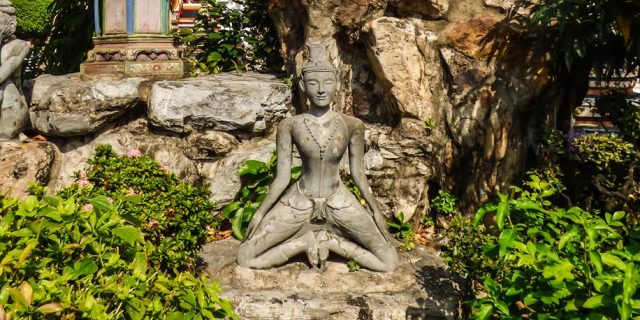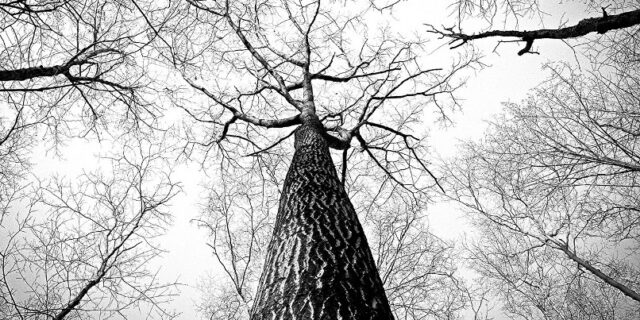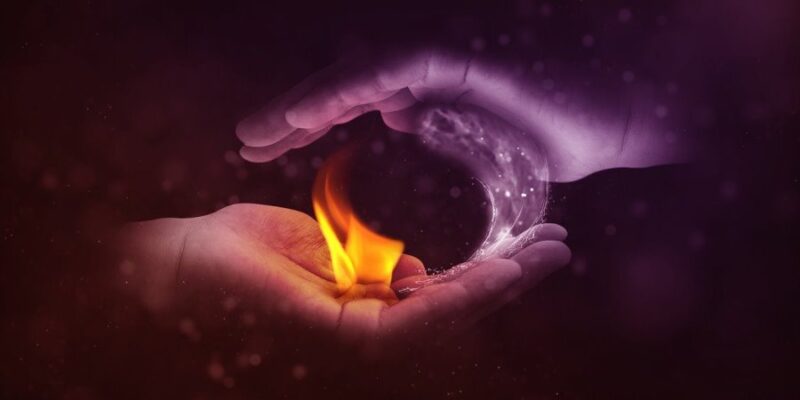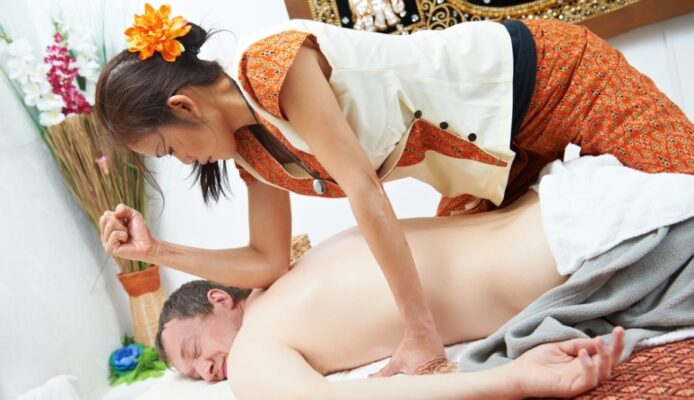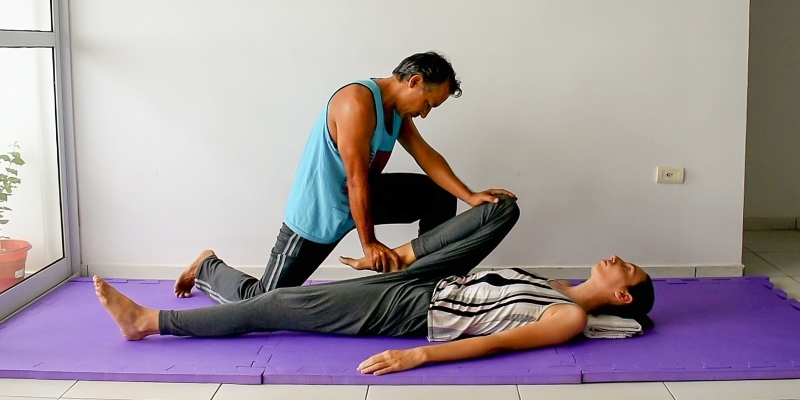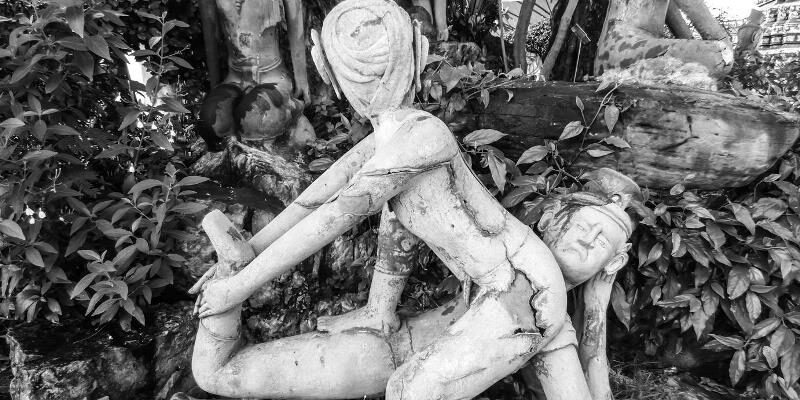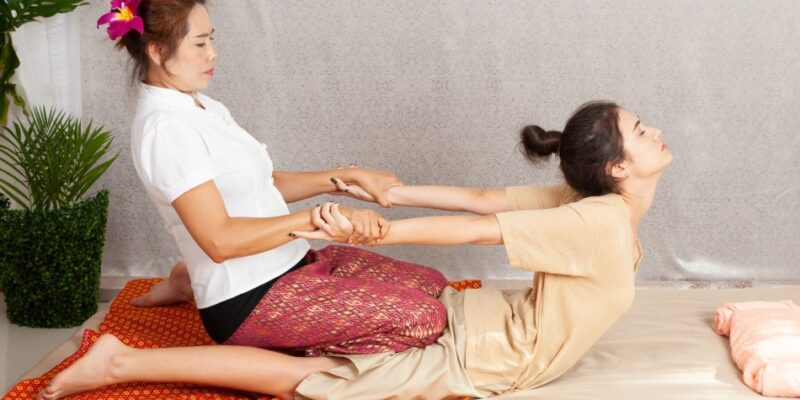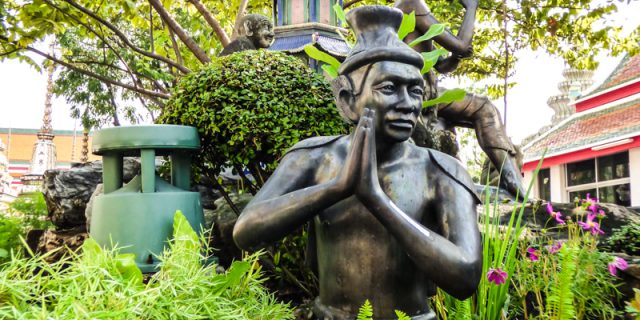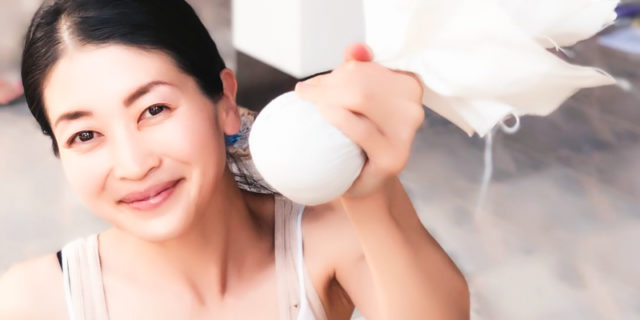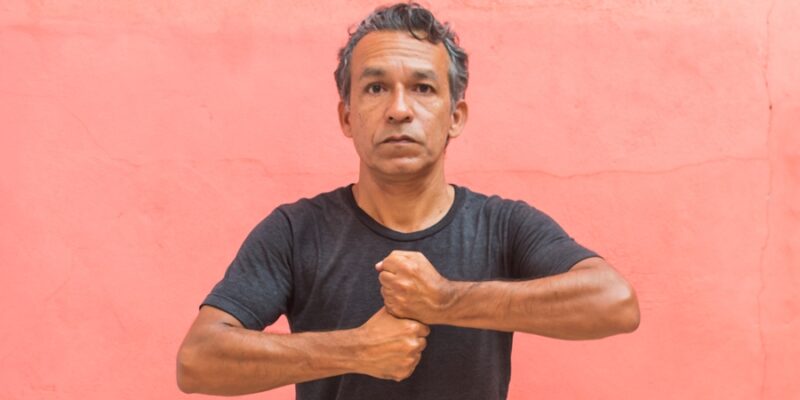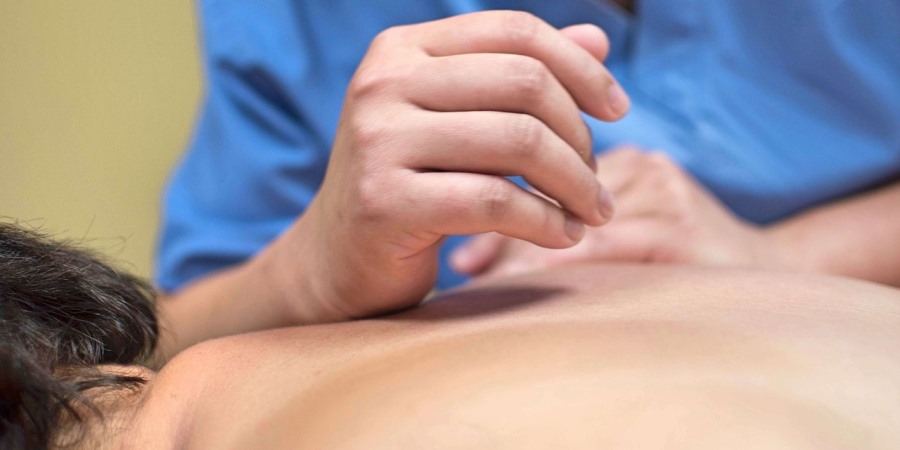
When it’s about the realm of Thai Massage Therapy training and education in Thailand, we enter a kind of “fuzzy” business. The whole thing is far from clear.
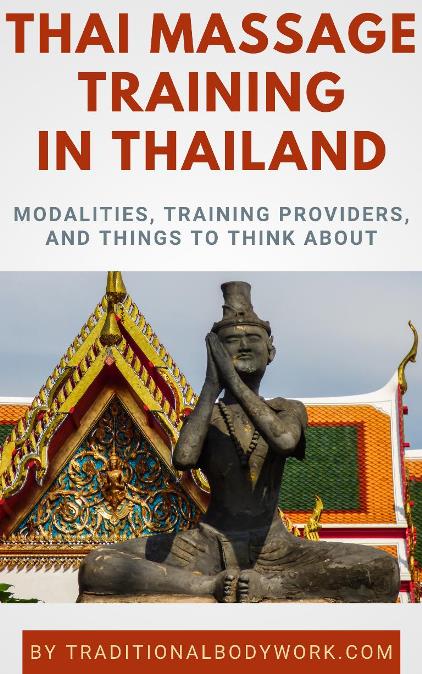
First of all, Thai Massage is all about healing, may it be preventive healing i.e. body maintenance or curative healing. In Thailand, as for Thai Massage training, one of the official (governmental) distinctions made is Thai Traditional Massage for Relaxation and Health (150 hours), Thai Traditional Massage for Relieving Symptoms (372 hours), and Thai Traditional Massage for Therapeutic Purposes (800 hours).
The two last curricula then mean the study of actual “Thai Massage therapy” or “Thai Therapeutic Massage.”
But… in reality, you’ll find many other names for Thai Massage Therapy courses, such as “Professional Intensive Thai Massage,” “Professional Thai Massage for Health,” ”Professional Thai Massage for Therapy,” “Thai Medical Massage,” “Thai Royal Massage,” and more.
Formal Thai Massage Curricula
Although the Ministry of Public Health, Ministry of Labor, and the DTAM have made official Thai Massage Therapy study curricula with certain course durations and content, the actual practice in Thailand is far from standardized. At times, it seems that each individual trainer in Thailand fills in the curriculum with its own topics, which seems to be the case especially for the private Thai Massage training schools and courses (those which are generally aimed at foreigners).
Officially, quality assurance of Thai Massage Therapy training in Thailand is implemented via governmental accreditation, certifications and several semi-governmental associative bodies, but let’s not dive deeper into the actual reality, which again is far from being compliant.
An Example: Watpo Massage School
The Watpo school in Bangkok, for instance, offers a Professional Thai Massage for Health course of 165 hours which comprises of 100 hours of practical sessions and 65 hours for theory and examination. In this course students learn how to perform “Thai Massage for Health” on the whole body, herbal massage, herbal sauna and head, and back and shoulder massage in the sitting position. According to Watpo, after finishing the course, students will be able to determine what kind of massage a specific patient needs.
So, in a way, Wat Po positions the Professional Thai Massage for Health course as a sort of “therapy course,” but then again, not in so many words, and… it isn’t really.

Their Professional Thai Massage Therapy I (200 hours) course however, specifically addresses Thai therapeutic massage. The 200 hours course comprises of 32 hours theoretical study about health science and traditional medicine, 82 hours Thai therapeutic massage and advanced Thai ascetic self stretching i.e. Reusi Dat Ton, and additionally 86 hours professional training. Watpo asserts that the students will study methods and techniques to treat about 25 conditions and ailments, such as frozen shoulder, carpal tunnel syndrome, neck issues, ankle and wrist sprain, and more. By the way, Part II of the course is very absent i.e. apparently non-existent.
Watpo’s Advanced Medical Thai Massage course is only 60 Hours, clearly addresses giving therapy, and teaches the fundamentals of Thai Massage Points and Lines for relief of more than 50 minor ailments, such as muscle sprains and pains, tennis elbow, neck stiffness, lower back pains, and many things more. The prerequisite for this course is their General Thai Massage Course of 30 hours, which then makes a total of 90 hours of training.
We can observe that in none of the cases mentioned above, there’s a clear relationship or compliance with the minimum of 372 hours of the Thai Traditional Massage for Relieving Symptoms course curriculum (the “real” Thai Massage therapy training) as proposed by the Thai Government.
Another Example: Thai Oasis Spa School
The Thai Oasis Spa School in Chiang Mai offers a Thai Massage for Health course of 150 hours (25 days). The official governmental curriculum of the Thai Massage for Health course, according to the Thai Ministry of Health guidelines, is not regarded as therapeutic massage, but rather serves general massage and relaxation purposes. But when we then look at the way the Thai Oasis Spa School positions the training, it aims clearly at giving serious Thai Massage therapy.
The Oasis school says the course is a comprehensive study of Thai Massage with a strong practical massage component (30 practice massages). Furthermore, students will study the theory of Thai Massage and Thai Traditional Medicine, including Buddhist traditions and meditation, and a basic understanding of Thai pharmacology. And… the students learn and practice therapy utilizing the Thai Ten Sen Energy Lines, study the effects and results on the body using traditional and Sib Sen therapy, as well as studying traditional Thai Massage and stretching for health. In fact, as a whole, students learn to perform therapeutic massage sessions addressing specific body conditions or other common discomforts.
Informal Thai Massage Therapy Courses
Without doubt, the majority of Thai Massage Therapy training in Thailand is given informally, that is, there’s no explicit relationship with or reference to official Thai governmental Thai Massage Therapy course curricula or required study hours. In fact, most Thai Massage schools and teachers in Thailand will offer one or more Traditional Thai Massage therapy courses or workshops in addition to their basic Thai Massage courses. And… every single school or teacher fills in the course with subjects as they please.

Of course, in most cases, students will learn about the Ten Sen Energy lines and therapeutic acupressure points, about treatment protocols (fixed set of actions depending on the sort of ailment) and diagnosis. Nevertheless, as there’s no common consensus in Thailand about Sen Energy Line trajectories in the body, the exact functions of the Energy Lines or about diagnosis methods and techniques, and neither about treatment protocols, in reality, it all seems at least a sort of arbitrary.
Perhaps the best Thai Massage Therapy training is those given in a “sit at the Master’s feet” style, where one learns to really look, feel, test and practice together with an experienced instructor who takes into account the differences of an infinite variety of individuals (the patients) and teaches how to adapt treatments to the very specific individual needs of clients. This certainly needs years of study and practitioning, in fact, lifelong continuing education.
One also needs to remember that each individual teacher follows a certain Thai Massage lineage or tradition, depending on his or her studies and background. Moreover, one will find profound differences between for instance Lanna Folk Healing techniques, Northern Hill tribe techniques, and southern style “Royal Massage” from Bangkok, just to give some examples.
Finally, we give you some examples of hands-on, informal applied Thai Massage therapy courses and training offered, which can be found with, for instance, Pichest Boonthumme, Sinchai, Mr. Nat, Sirichan (Dr. Nooy), Baan Hom Samunphrai, Terdchai Chumphoopong, Jack Chaiya, among many others mostly found in Chiang Mai and Bangkok.







